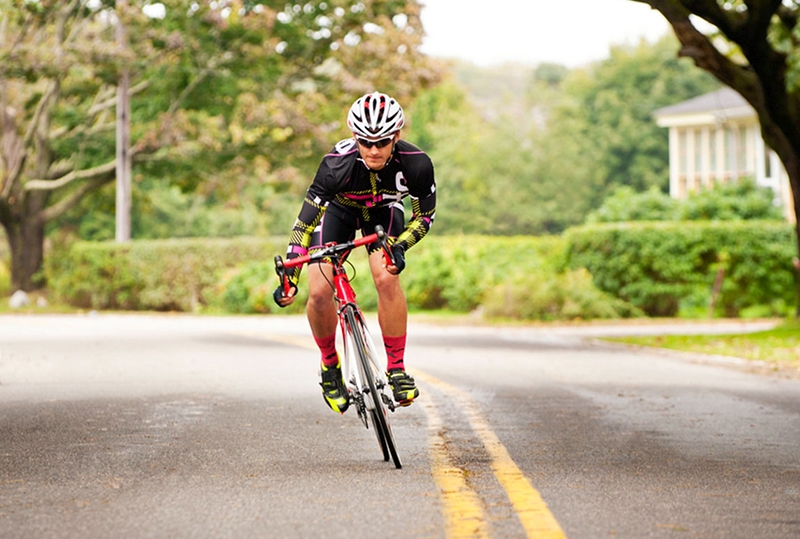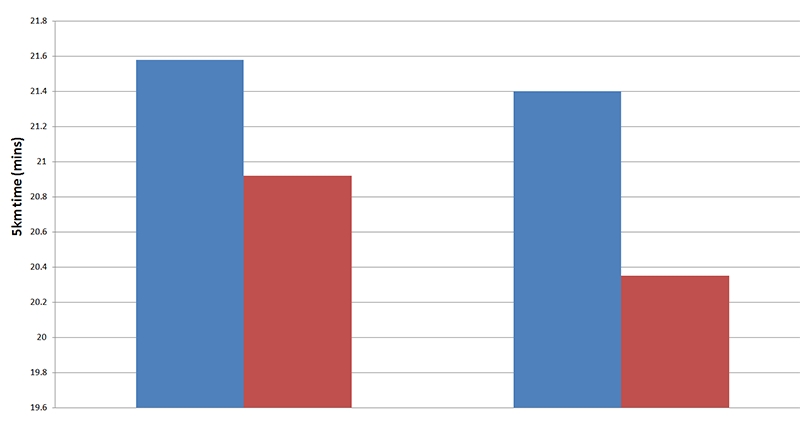You are viewing 1 of your 1 free articles. For unlimited access take a risk-free trial
Bike hard, run fast!

Can runners and triathletes improve their running performance with specific training sessions on the bike? Andrew Hamilton looks at what the research says
Without doubt, one of the most effective ways for runners and triathletes to build fitness and speed is interval training - a proven method of training that intersperses intervals of high-intensity exercise, with short periods of rest. Most swimmers use intervals in their training as a matter of course. Swimming a straight 2km in the pool is pretty boring. Split it up into say 4 x 400m and 4 x 100m and not only does time fly, but the work quality will almost certainly rise too!Meanwhile, the rapid rise in bike computer technology use means that (traffic conditions permitting), structured interval training on the bike is easier and more interesting than it ever used to be. But perhaps even more importantly, the risk of injury during high-intensity training in these two disciplines is relatively low. This is in stark contrast to running, where increased impact shock combined with any biomechanical imbalances you might have makes high-intensity running training a far riskier proposition.
Bike intervals for running speed
Although the muscle recruitment patterns are different, there’s quite a lot of overlap in the muscles used during cycling and running, which begs the question “Could interval training on the bike enhance running speed?” If so, biking intervals could be a valuable tool for injury-prone triathletes who want to improve run performance without the increased injury risk. To answer this question, a group of British and Australian scientists investigated the effects of two types of bike-based high-intensity interval training (HIT) on triathlon-specific cycling and running performance(1).Fourteen trained male triathletes completed a maximal incremental test to measure their aerobic fitness, 16 × 20s cycle sprints to measure their power, and a 1-hour triathlon-specific bike ride (at an average power output of 65% maximum power - simulating the relative intensity observed during Olympic distance triathlon racing) followed immediately by a 5km run time trial to measure triathlon-specific running performance. After this ‘baseline’ test, the triathletes commenced an interval programme, training twice a week for 3 weeks. Training wise however, the triathletes were split into one of two groups:
- *Long intervals (6-8 × 5-minute efforts at 80% of the triathletes’ maximum oxygen uptake – ie fairly hard)
- *Short intervals (9-11 × 10, 20 and 40-second efforts at near maximum effort)
Figure 1: Cycling intervals and 5km run times

Short interval results shown on left and long interval results shown on right. Blue = before training; red = after training. The reduction in 5km times after long cycling intervals is larger and is a significant effect.
Implications for triathletes and runners
Previous research using mathematical modelling suggests that cross-transfer training effects do occur between cycling training and running performance in elite triathletes but that swimming training is unlikely to benefit either running or cycling(2). That’s not surprising given the minimal muscle overlap between swimming and cycling/running. What the research highlighted here shows is how those benefits can be achieved. Despite the undisputed fitness benefits of short, high-intensity intervals, if you want to use cycling intervals to help your running performance in a sprint-distance triathlon, long intervals are what you need. Here then are some guidelines:- *To boost your 5km run performance in three weeks without performing running intervals, try using long cycling intervals:
- *Advanced triathletes should train twice a week, performing 6 × 5-minute efforts at 80% VO2max with 1 minute recovery between efforts. Build this to 7 × 5-minute efforts in week 2 and 8 efforts in week 3;
- *Less accomplished triathletes (and runners who are not regularly cycling) should begin with 4 x 5-minute efforts performed just once a week, building to six efforts as fitness increases;
- *Always ensure you take a rest or easy day before and after your interval days;
- *Triathletes - don’t forget, you’ll still need to keep your running training going as well as your longer bike rides!
Newsletter Sign Up
Testimonials
Dr. Alexandra Fandetti-Robin, Back & Body Chiropractic
Elspeth Cowell MSCh DpodM SRCh HCPC reg
William Hunter, Nuffield Health
Newsletter Sign Up
Coaches Testimonials
Dr. Alexandra Fandetti-Robin, Back & Body Chiropractic
Elspeth Cowell MSCh DpodM SRCh HCPC reg
William Hunter, Nuffield Health
Keep up with latest sports science research and apply it to maximize performance
Today you have the chance to join a group of athletes, and sports coaches/trainers who all have something special in common...
They use the latest research to improve performance for themselves and their clients - both athletes and sports teams - with help from global specialists in the fields of sports science, sports medicine and sports psychology.
They do this by reading Sports Performance Bulletin, an easy-to-digest but serious-minded journal dedicated to high performance sports. SPB offers a wealth of information and insight into the latest research, in an easily-accessible and understood format, along with a wealth of practical recommendations.
*includes 3 coaching manuals
Get Inspired
All the latest techniques and approaches
Sports Performance Bulletin helps dedicated endurance athletes improve their performance. Sense-checking the latest sports science research, and sourcing evidence and case studies to support findings, Sports Performance Bulletin turns proven insights into easily digestible practical advice. Supporting athletes, coaches and professionals who wish to ensure their guidance and programmes are kept right up to date and based on credible science.













